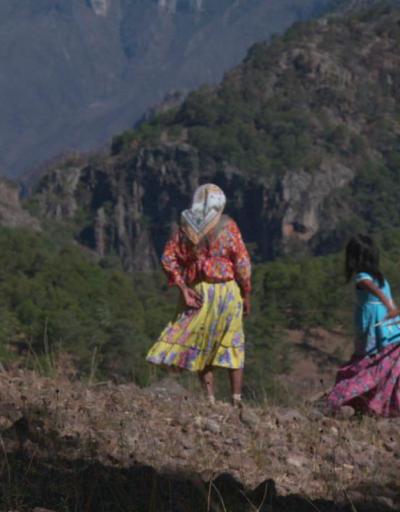Multicultural societies exist thanks to their languages. Knowledge, traditions, and identity are transmitted and preserved, both for communities and individuals, through them.
Linguistic diversity, however, is increasingly threatened by the accelerated disappearance of languages. According to UNESCO, at least 40% of the 7,000 languages estimated to be spoken in the world are endangered, and on average, a language disappears every two weeks, taking away the cultural and intellectual heritage of communities. Hence, the importance of revitalizing, conserving, and promoting all languages.
Multilingual education fosters inclusive societies where the rights of all individuals are guaranteed, and it is also a pillar for preserving non-dominant, minority, and indigenous languages.
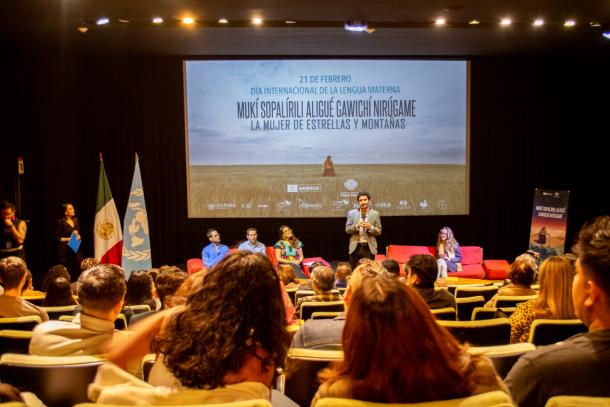
Within the framework of International Mother Language Day, the documentary Mukí Sopalírili Aligué Gawichí Nirúgame (The Woman of Stars and Mountains) was presented, followed by a panel discussion involving representatives from the UNESCO, CINU, and IOM offices in Mexico, as well as the filmmaker, the actress, and the linguist who made the documentary, along with Juana Osorio, the niece of Rita Patiño, the Rarámuri woman on whose case the film is based.
Experts agreed that the foundation for access to services and rights in the mother tongue is education, but they emphasized the importance of creating inclusive spaces and public policies where cultural and linguistic diversity are present.
The purpose of international days is to commemorate but also to make calls to action and reflection. The importance of having this documentary is to send a message about what needs to be done, which concerns all of us
The documentary portrays the story of Rita Patiño, a Tarahumara woman whose long journey took her from Chihuahua to the centre of the United States, where she was confined for 12 years in a psychiatric hospital and inadequately diagnosed with schizophrenia due to ignorance and prejudices about her appearance, behaviour, and way of speaking. Rita's story exposes the human rights violations experienced by thousands of people due to the lack of cultural and linguistic diversity approaches.
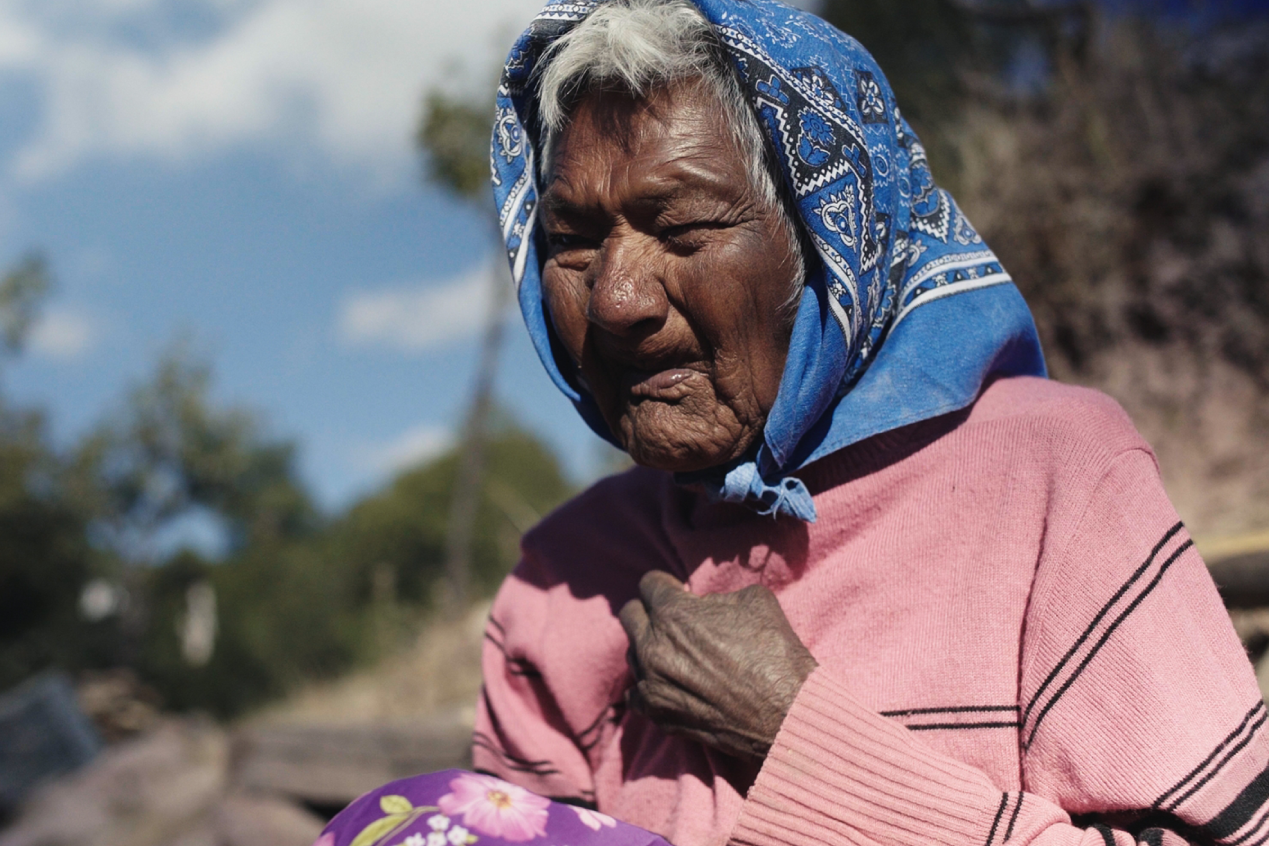
Rita Patiño's case on which the documentary is based
Like a true Rarámuri (Tarahumara), Rita crossed dozens of rivers, ravines, and mountains on foot. One night in 1983, she was found tired and frightened in a church in Kansas, in the heart of the United States. Without access to an interpreter, Rita was sent to a psychiatric hospital and inadequately diagnosed with schizophrenia. For 12 years, she remained deprived of her freedom, poorly medicated, and stripped of her rights...
Bilingual Education in Mexico is Not Equal for Everyone
Studies highlight that using students' mother tongues in education removes barriers and promotes better learning outcomes, self-esteem, and critical thinking skills.
Only a few hundred languages truly fit into educational systems and the public domain, and fewer than a hundred are used in the digital world. Currently, 40% of the world's population lacks access to education in their mother tongue, but exceeds 90% in certain regions.
The Catalog of National Indigenous Languages identifies 364 languages or linguistic variants in Mexico, 68 linguistic groups, and 11 linguistic families. Although there are textbooks in indigenous languages and education is supposed to be bilingual and bicultural, it is only a reality for a part of the population.
"Bilingual and bicultural education is only for the indigenous population, they are the ones who have to be bilingual and bicultural, and often schools are functioning as castilianizing models," emphasized Adrián Moreno, the linguist who participated in the documentary.
In Mexico, education often does not prioritize indigenous language teaching and strengthening because of cultural and linguistic detachment, added the expert.
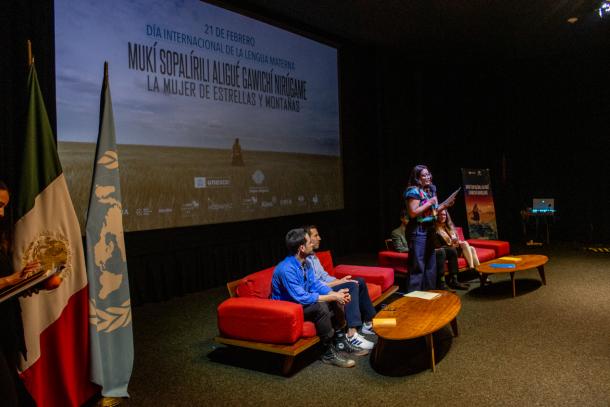
"We must win the race against the disappearance of living languages. It is crucial. As long as dominant languages overshadow other populations, the rights of people like Rita will continue to be diminished in schools, hospitals, workplaces, justice, and other public and private spaces that are essential for their well-being and our development as diverse societies," mentioned Carmen Morales, director of the United Nations Information Center for Mexico, Cuba, and the Dominican Republic.
Art as a Tool to Raise Awareness and Normalize Multilingualism
Art, and in this case cinema, is a tool that contributes to positioning and sensitizing the population about different issues and social problems.
In this case, the documentary "Mukí Sopalírili Aligué Gawichí Nirúgame" ("The Woman of Stars and Mountains") not only shows how linguistic rights are closely linked to human rights but also respects and positions the language throughout the documentary project.
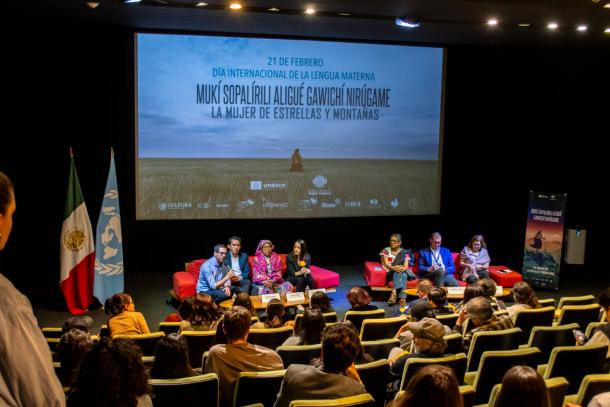
In that sense, director Santiago Esteinou pointed out that cinema is one of the ways to normalize the use of indigenous languages and reflect the challenges their speakers face.
It is a call to normalize the use of indigenous languages in a non-discriminatory way. We as filmmakers can contribute a small grain of sand. About this film, if the movie took place in an indigenous community, it was important for it to be spoken in that language. Hopefully, we will reach a point where it is normal and common to see movies in indigenous languages, as if you were watching a movie in English or French

To learn more about the film and its future screenings to cinemas, you can find them on Instagram as mujerdeestrellas_


